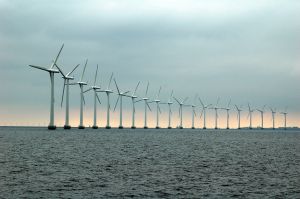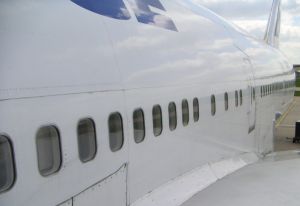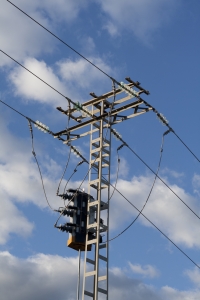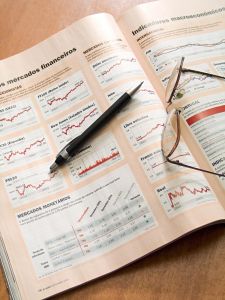Hello all,
The report card on performance of nations and leading companies for Q1 2013 is out and has been the subject of review and intense debate throughout April.
HITS AND MISSES
China’s gross domestic product (GDP) came in at 7.7%, down from the previous quarter’s 7.9%. In March, industrial production increased 8.9%, just shy of the 10.1 % lift [China Spectator]. U.S. GDP increased at an annual rate of 2.5% from Q4 2012 and was just short of the expected 3.0% [Hot Air]. Singapore’s GDP contracted 1.4% over the previous quarter. U.K.’s GDP expanded 0.3% quarter-on-quarter driven by the services sector growth and bounce-back in North sea oil and gas output [Trading Economics]. The German economy stabilized in the first quarter after contracting in Q4 2012 [RTT News].
IN RECOVERY MODE ?
A Reuters column last weekend stated that officials believe that the euro zone had turned the corner, sharpening the focus on longer-term reforms and structures……definitely news to cheer about from a global perspective. Which begs the question – has the euro zone hit the bottom of the U ?
After the “Jack-Rabbit” start to 2013, are we in for a spring swoon to the stock market ? Predictions are for a mitigated spring slide. There are several positives that may offset some of the negatives making for a potential decline that may be less steep than seen in recent years [Business Insider].
There was more news to cheer about last weekend. The Boeing 787 Dreamliner was back in the skies following a successful commercial flight on April 27. Aerospace grade carbon fiber producers and CFRP processors, in particular, would be heaving a sigh of relief as the grounding had really nothing to do with composites, but was yet holding back progress in a muted manner.
REV IT UP
Global assembly of light vehicles is forecast to reach 82.1 million units in 2013, representing a 4% year-on-year growth. North American assembly is forecast to reach 15.9 million units, representing a 3.6% increase from 2012, driven primarily by the U.S. automotive market. China is projected to achieve assembly of 18.9 million units – an impressive jump of 14% from 2012 [Plastics Today].
A highly reinforced polyamide 6 with 60% glass fiber loading renders metal superfluous in front end carriers for passenger cars. In addition to mounts for the headlamps, the front end carrier of the new Skoda Octavia also integrates injection-molded mounts for the radiator, hood lock, anti-theft system and air ducts. The composite product, with just one injection mold, eliminates the complicated handling and shaping of sheet metal; has significantly better mechanical properties, displays good flow, allows for very thin walls, topping off with a finely grained structure that fits well with the overall visual appearance [Plastics Today].
IN TOP GEAR
Heavy steel leaf springs in automotive suspension systems may well make way for composites. Henkel has developed a RTM process for composite leaf springs using glass fiber and polyurethane (PU) resin. The GFRP leaf springs are reportedly 65% lighter than their steel counterpart. The PU resin cures significantly faster (than epoxy), penetrates and impregnates the glass fiber more easily due to its low viscosity, thereby enabling very short injection time. The exceptionally high stress intensity factor (which is a measure of toughness) of the PU resin has a positive effect on the fatigue behavior under load and, hence ideal for car leaf springs that are constantly subject to dynamic loading. Risks of local overheating and resulting shrinkage (in the RTM process) is reduced as the PU resin generates less heat overall during curing than epoxy resins. Hence, even thick components with several layers of fiber/fabric, cure fast [Plastics Today].
LONGER BLADES – MORE MW
The quest for monster 100-meter wind turbine blades required to make offshore wind compete with fossil fuels continues. Wind turbines account for around 33% of the cost of offshore wind farms – installation costs are the major expense. Use of larger turbines reduces the number of wind turbines needed, thereby decreasing installation and maintenance costs. However, as turbines get bigger, the loads on the blades and hence their weight, goes up exponentially. Traditional blade manufacture involves forms as long as the blades. Blade Dynamics, partly owned by American Superconductor, has developed proprietary ways to make 12-20 meter sections of carbon fiber (CF) blades and then splicing them seamlessly, thereby eliminating the need for large forms [MIT Technology Review]. Though more expensive than glass fiber (GF) blades, CF blades are lighter. By making the blade in smaller sections, its possible to make more precise aerodynamic structures, thereby improving performance. It is also possible to put longer, lighter (CF) blades on existing wind turbine designs. Longer blades gather more wind, allowing the turbines to generate more power at lower wind speeds, increasing revenue in the process. Other advantages of lighter blades include feasibility to design new wind turbines that have lighter, less expensive components such as drive shaft, tower and foundation.
Carbon or glass fiber for longer blades and higher MW turbines for offshore ? The battle rages. As of now, CF has the definite edge.
NOVELTY NEVER WEARS OFF
When it comes to lightweighting technologies, the aerospace sector is not far behind automotive. Polycarbonate (PC) and its co-polymers are enabling processors to produce parts with thinner walls that help reduce interior weight of an aircraft. Parts can be molded or extruded with very thin walls (down to 1.5 mm) while complying with leading flame, smoke and toxicity (FST) standards with halogen-free flame retardants to support sustainability [Plastics Today]. SABIC‘s new range of PC co-polymers have special features called the shear-thinning effect and are also said to meet tough commercial toxicity standards from Boeing and Airbus. The products flow slowly in low shear conditions (extrusion) and flow quickly in high-shear processes (injection molding).
SHIFTING TRENDS
If you thought that single piece thermosetting SMC was the prerogative of bumpers for trucks and heavy goods vehicles, here is the not-so-surprising news….. future trend is for such bumpers to be manufactured on a modular basis from several components such as polyamide and polyester injection molded thermoplastic compounds. Headlamp supports would be from highly reinforced polyamide 6 with 60% glass fiber. The supports hold the headlamps and the light strips. They not only have to bear their weight (around 8.5 kgs per headlight), but must also withstand very high static and dynamic loads – hence must not fracture even under severe dynamic acceleration of up to 10 times the force of gravity. The U-shaped center front-step which is connected to the headlamp supports is injection molded from a PET+PBT blend reinforced with 20% glass fiber. The part is provided with numerous ribs and designed for a static load of 2kN as it has to bear the weight of the driver as he climbs on to the front to clean the wind screen. The thermoplastic blend has adequate flexural stiffness that renders steel reinforcement redundant [Plastics Today].
The technological advances in thermoplastics and blends thereof in the past decade have been phenomenal – especially in the automotive sector, where they were considered taboo for load-bearing applications not long ago.
THERMOPLASTICS FLYING HIGH
Component integrity is critical to keeping aircraft in service to minimize maintenance and downtime. Brackets for use in aircraft structural applications have now been developed in carbon fiber reinforced polyether ether ketone (PEEK). The brackets weigh 45 grams each and used in primary and secondary structural applications in commercial and military aircraft. Besides a 70% weight saving compared to metals (stainless steel, aluminum and titanium), other benefits include faster part manufacturing cycle times (in minutes) compared to thermosets ( in hours). At current fuel prices, a 1 kg reduction in weight from a short-range aircraft can save airlines up to $ 100 in fuel costs. If composites brackets can remove 100 kgs of weight, an airline with 500 short-range aircraft could save up to $ 5 million annually by making the switch from traditional metal [Plastics Today]. Apart from a five-fold higher fatigue strength, added advantages over metal are vibration and noise dampening improvements.
FUTURE SHOCK !
The shale boom in the U.S. has left the world’s largest economy awash in the power source which is used by utilities to generate nearly 25% of U.S. electricity [CNBC]. Utilities have traditionally used coal to generate electricity. But the abundance of relatively inexpensive natural gas has given power operators an incentive to shift away from coal. Energy markets continue to converge bringing the crude oil/natural gas ratio to 20:1 – the tightest ratio since January 2011. Even a year back, it was around 51:1 [Plastics Today]. Lyondell Basell’s recent announcement of expansion plans for 1.2 billion pounds of new PE capacity in North America has made it the sixth PE maker to announce plans for new PE capacity joining Chevron, Nova, Formosa, Dow and Exxon Mobil – such has been the impact of the availability of abundant natural gas from shale deposits in the U.S. The cumulative increase in new PE capacity by the six companies is greater than 6 billion pounds [Plastics News].
Little wonder that PE is experiencing a surge in growth and rivaling PP in several applications.
An insert molding process employing a co-polyamide adhesion promoter to bond aluminum tubing with glass fiber reinforced polyamide 6 is being used by Mercedes Benz in several of its vehicles to derive weight savings [Plastics Today]. The aluminum tubing connects both A-pillars together and supports the entire dashboard – from the steering wheel to the glove compartment. The co-polyamide adhesion promoter covers the aluminum tubing and joins the composite holding brackets of the individual components to the tubing by an injection molding process based on melt-bonding. Component weight is drastically reduced by 20% compared to traditional joining methods such as welding/screwing together with metal connecting plates.
SWAP – GLASS TO POLYCARBONATE
This one for the road…. Volkswagen is debuting a two-component injection molded, plasma coated polycarbonate side windows that provides a 33% weight saving over traditional glass windows as well as scratch resistance. The glazing provides the same visual characteristics as standard glass windows [Plastics News].
Per Bloomberg New Energy Finance, global investment in clean energy in Q1 2013 was lower than at any other quarter since 2009. From Q4 2012, global investment in clean energy plummeted 38%. In the U.S., Q1 2013 has seen a 54% drop (possibly due to late announcement of the PTC extension); Europe a 25% drop and China 15% [Oil and Energy Insider].
The grapevine on ending fuel subsidies to level the playing field could be one of the reasons. A wait and watch approach is perhaps the best recourse to green energy crusaders.
INVESTMENT PLANS
A cursory reading of this post would obviously show the emphasis on automotive, aerospace and wind energy sectors and not without reason. Currently, these market segments are the principal growth drivers for composites almost globally, with other sectors also pitching in a measured way depending on the region. The Middle East had airline traffic gain of 15.6% year-over-year, Latin America had traffic gain of 11.8%, Asia Pacific 5.4%, Europe 3.7% and North America 2.4% – an overall growth reflecting business confidence [Forbes]. The fact that China’s growth is poised to be driven by domestic demand (rather than exports) is a welcome change and augurs well for the industry. The U.S. automotive sector appears to be on a roll with CFRP being a game changer, though the last minute renewal of the PTC for wind energy could slow down the sector in the first half, after a record 2012 performance (in terms of GW installed). Advantageous energy costs (natural gas and electricity futures) should be beneficial to glass & carbon fiber expansion plans and/or greenfield plants that are on the anvil.
2013 could well serve as the (re) launch pad for the composites industry in North America to take off yet again (after a tepid 2012) resulting in greater gains from 2014 & aided by continued focus on material substitution.The time to reap the benefits of attractive energy costs is NOW !
Tailpiece : Global consumer confidence rose in Q1 2013 – confidence improved in 60% markets globally compared to only 33% in Q4 2012, with marked increase in sentiment in the U.S., Japan and Northern Europe [Trade Arabia].
While this may invoke a smile in many, the Cassandras would probably still sulk.
Till the next post,
Cheers,
Email: SS@essjaycomposites.com
Twitter: @essjaycomposite
Website: www.essjaycomposites.com











You must be logged in to post a comment.